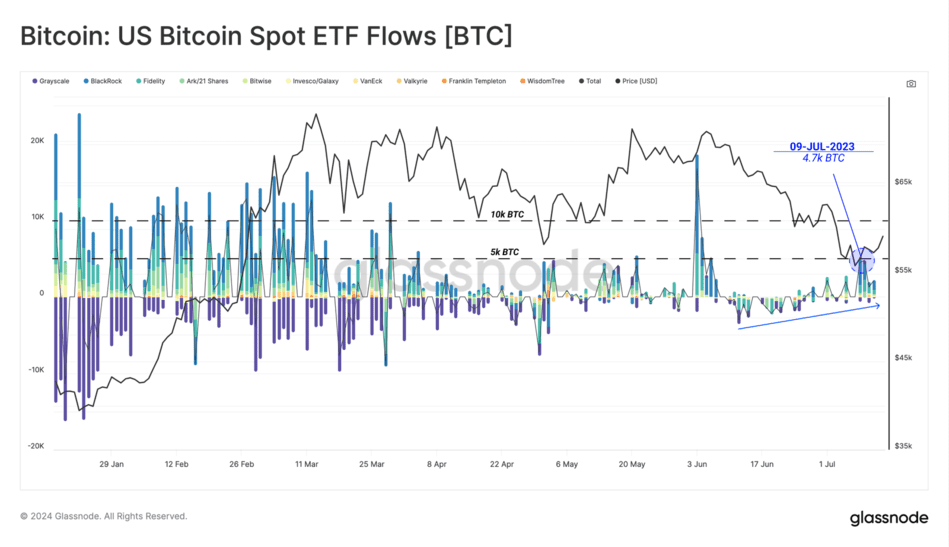TL;DR
- The German government sold a record 48,000 Bitcoin, marking a milestone in state management of digital assets.
- The introduction of 11 US spot ETFs added 887,000 BTC to their holdings, becoming the second largest group of Bitcoin holders after centralized exchanges. This influenced the price reaching an all-time high of $73,750 in March.
- While miners and centralized exchanges remain sources of selling pressure, flows on exchanges have shown a decrease since their peak in March, suggesting stabilization in supply and demand dynamics.
In recent weeks, the Bitcoin (BTC) market has seen events that shaped its dynamics. One standout event was the massive sale of over 48,000 BTC by the German government, setting a record in state-level digital asset management.
The German government’s decision to liquidate its Bitcoin balance has been seen as a strategic move to profit from sales, with BTC stemming from a large-scale seizure related to a movie piracy site.
The sale, conducted in multiple tranches from early to mid-July, coincided with a period when the Bitcoin market underwent a significant correction, with prices around $54,000. The timing suggests the market anticipated the news, responding with reduced selling pressure immediately after the price collapse.

The Crucial Role of Bitcoin ETFs
In addition to the government sale, the role of ETFs has become pivotal for BTC. The introduction of 11 US spot ETFs has added a total of 887,000 BTC to their holdings, positioning them as the second largest group of Bitcoin holders after centralized exchanges. This accumulation is clear evidence of institutional interest in BTC. Moreover, it significantly influenced its price, which reached an ATH of $73,750 in March, two months after the ETFs’ launch.
In terms of selling pressure, miners have historically been influential, although their impact has diminished with each halving. Currently, centralized exchanges remain the most persistent source of this pressure, although inflows and outflows on exchanges have shown a marked decrease since the peak in March. This suggests stabilization in supply and demand dynamics.
The Bitcoin market faces a period of adjustment and consolidation following these movements. While long-term investors maintain their positions relatively stably, recent events have reinforced the inherent volatility of the sector and the market’s ability to adapt to geopolitical changes and institutional flows.


